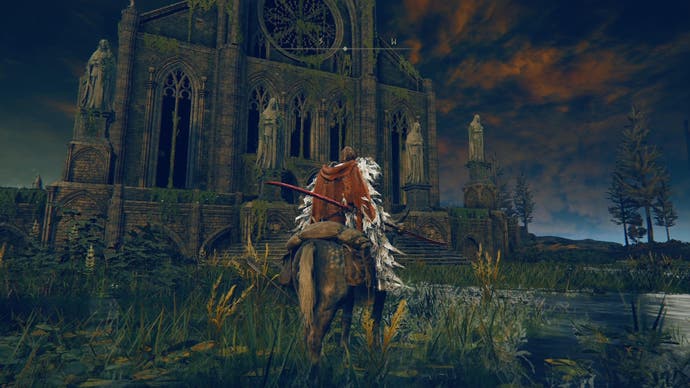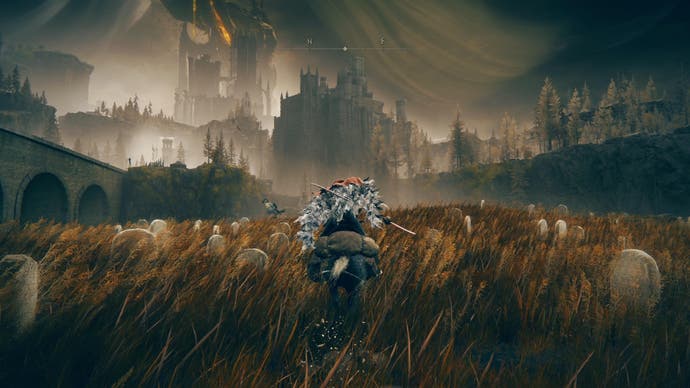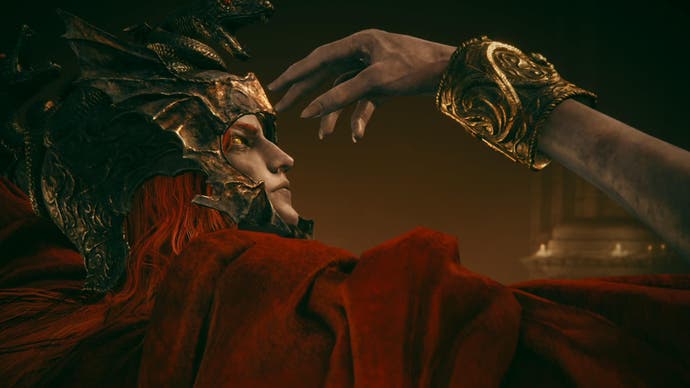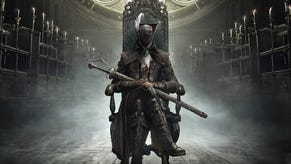Elden Ring: Shadow of the Erdtree's progression issues could do with a bit of Nintendo magic
The Legend of Messmer.
I really do love Shadow of the Erdtree. I love its varied, spectacular environments. I love how its dungeons are more convincingly integrated into the world design, the map as a whole a puzzle to solve. I love the visual style, how emerging into each area is framed like a renaissance painting of a post-battle autumnal dreamscape.
But I have to admit, the Elden Ring DLC has a problem with progression. And it's a problem some inspiration from Nintendo could solve. After all, Elden Ring is just Breath of the Wild - Dark Souls, right?
I jest. Since its release, much of the Shadow of the Erdtree discourse has focused on difficulty. And that's to be expected for a Souls game. But really, the perceived challenge is exacerbated by the DLC's new Shadow Realm Blessing progression system, which limits player agency in favour of a singular mission.
That's somewhat antithetical to the Elden Ring experience, the beauty of which is in the options it provides players. Struggling with a boss? Go explore elsewhere, find some new gear, or simply grind for runes to level up your stats. It's this built-in approachability that, in part, led to the game's meteoric success.
Yet this is lost in Shadow of the Erdtree. At this late point in the game, levelling stats requires hundreds of thousands of runes for a minimal improvement. And as any gear found must tie back to the base game, it rarely offers defensive improvements over what's already been acquired. That's not to say there aren't options - I'm a big fan of the Dryleaf Arts kung-fu moves, for instance, to cathartically punch dragons in the face - but they're not statistically better, just different. Shadow of the Erdtree is a playground for gear variety, but it's all too easy to get stumped on a boss due to numbers over skill.
FromSoftware's predicament, though, is that pitching difficulty is a seemingly impossible task. Some players, like me, will have accessed the DLC with an endgame build, others will have scraped by the necessary bosses or beaten multiple levels of NG+. We're not all on the same level, starting at the same point. How do you satisfy all these players and offer a reasonable amount of challenge?

In this case the studio's answer is Scadutree Blessings. In short, players find fragments around the world that can be exchanged for a boost in overall stats. This hunt for fragments provides a sort of meta-game focus beyond the story, but - unlike the base game - is also the only reasonable method of character progression. The provided boost is minimal too, meaning progression in Shadow of the Erdtree is a slow burn with players mostly unable to brute force through bosses without fully exploring the world.
Exploration is at the heart of Elden Ring, and discovery is often a reward in itself. Yet raising your Scadutree Blessing feels almost entirely necessary (for first time players at least) to get through the DLC, especially its final boss. Though I personally relished that particular challenge (for a while), it soon became clear I simply wasn't a high enough Blessing level to stand a chance. And with no in-game assistance in finding fragments, this ultimate challenge feels less a test of skill and more an arbitrary macguffin hunt. And that's not very Elden Ring - but it is very Zelda.
Take the finale of Wind Waker, for instance, which requires collecting the Triforce pieces before accessing the final area. Or, in the recent open world Zeldas, how your chances of survival are vastly improved by discovering all the shrines. Shadow of the Erdtree's fragments feel similar to me, but it's a tedious quest - one of directionless wandering with the vague hope of stumbling upon a precious item.


What I really craved was the Hero's Path feature from Breath of the Wild. I wanted to see where I'd been and carve a line through the Land of Shadow, to spot the gaps. The Sheikah Slate's radar system would have also proven handy, so I could hone in on fragments without resorting to guides. Instead, the search for fragments felt like shrine hunting across Hyrule with a blindfold. Both Shadow of the Erdtree and Breath of the Wild offer a similar method of character progression through exploration, but frustratingly only one provides you with the necessary tools of discovery.
An alternative would be the Metroid treatment. I love how each Metroid game finds a new contrivance to strip Samus of her abilities. We all know she'll eventually get the morph ball and a double jump, but it wouldn't be a Metroid game if we didn't have to uncover these for ourselves. Our Tarnisheds could have undergone a similar treatment in Shadow of the Erdtree. After all, this is an alternate realm entered through Miquella's egg-shaped version of rebirth - could we not have done the same? Levelling would be swifter, found gear would be useful again, and the difficulty could have been more evenly scaled.
It's not as if FromSoftware hasn't been inspired by Nintendo before. I've been playing Dark Souls Remastered recently and its own DLC similarly transports players to an alternate realm, where a princess to talking mushrooms is kidnapped by a dark force - that certainly sounds familiar. Elden Ring's contrasting open fields and claustrophobic dungeons trace back to Breath of the Wild, and Shadow of the Erdtree reminds me a little of Skyward Sword in the way dungeons spill out into the world. Perhaps Zelda's breakable weapons are a step too far for Elden Ring - or are they? It would certainly push players to experiment more frequently with their builds - and not just to get through the final boss.

It's as if Zelda and Souls games have a sort of ongoing dialogue. Despite its grotesque edge, Souls is clearly rooted in Zelda: from its sword and shield combat, to its holistic focus on exploration and discovery. Plenty of other action-adventure games have followed suit too, though none - arguably - quite as successfully. Every element of Nintendo's open world Zelda games leads players back to that sense of exploration and Elden Ring does the same. It's just, in Shadow of the Erdtree, the need to twist the progression system has distorted the balance, and the lack of discovery tools is the missing link (pun unintended).
That's in part why it feels like Shadow of the Erdtree could've worked best as a standalone game (though at the least it's certainly got me excited for whatever FromSoftware produces next). Instead, for all its improvements, it's a typical Souls DLC: a creative, fairytale spin on a familiar world filled with even more twisted bosses, but with sometimes excruciating difficulty - and as a result one that struggles to integrate its more linear grinding with the structure of the base game. At least in Elden Ring there are summons to help you - after all, it's dangerous to go alone.
.png?width=690&quality=75&format=jpg&auto=webp)




.png?width=291&height=164&fit=crop&quality=80&format=jpg&auto=webp)

_MEGHzTK.png?width=291&height=164&fit=crop&quality=80&format=jpg&auto=webp)
.png?width=291&height=164&fit=crop&quality=80&format=jpg&auto=webp)

-Teaser-Trailer-(Directors-Cut)-_-Short-Film-2025-0-24-screenshot.png?width=291&height=164&fit=crop&quality=80&format=jpg&auto=webp)